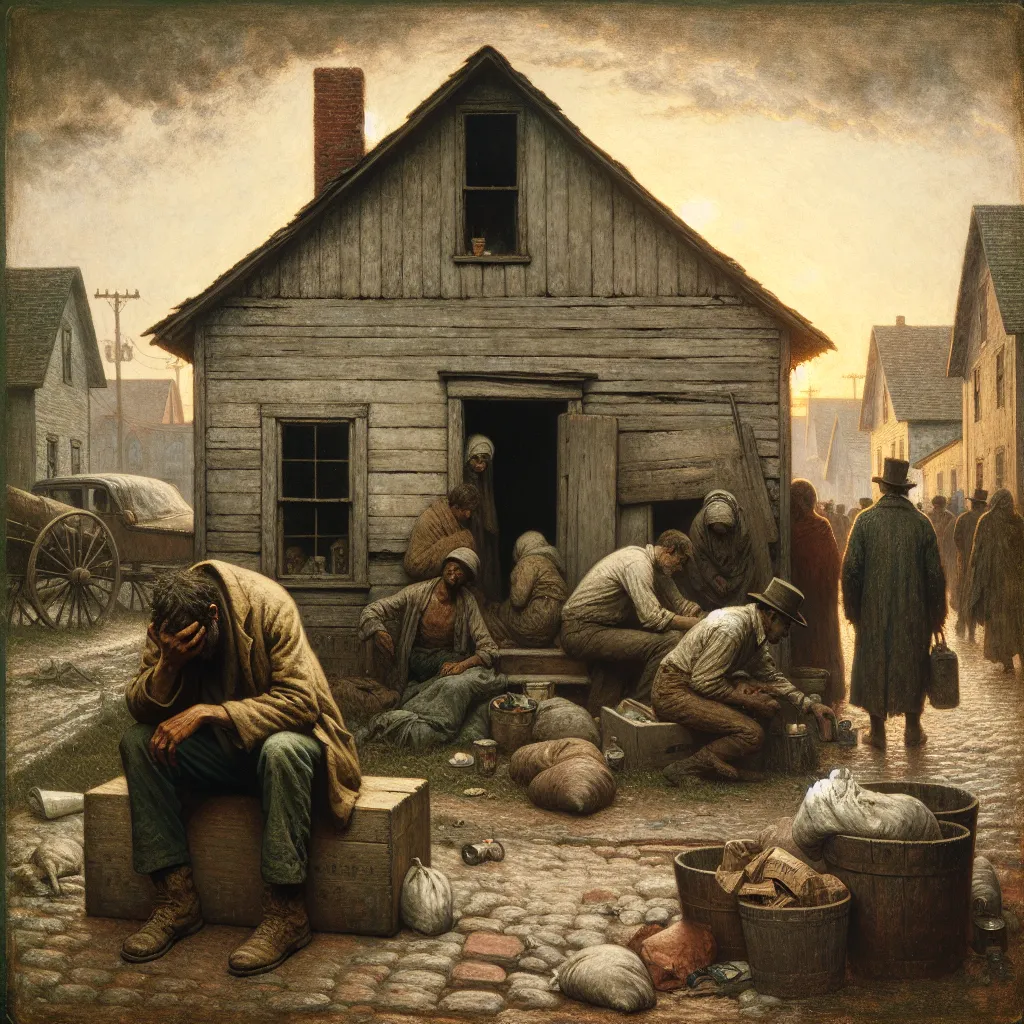How do funding and assistance programs affect the lives of Americans?

- How does the financial crisis affect the budget deficit and Social Security in the U.S.?
- How does the affordable housing program work for low-income citizens?
The U.S. fiscal year and the budget deficit
In the United States, the fiscal year that ended on October 31 witnessed a record increase in the budget deficit, which reached a whopping amount of1.409 trillion dollars. This amounts to9.9%of the total gross domestic product (GDP) of the country. The main reason for such a significant increase in the deficit is the increased state budget expenditures against the background of reduced tax revenues caused by the global economic crisis.
Comparison with 2008
To better understand the situation, it is worth drawing a parallel with 2008: at that time the budget deficit amounted to only3.2%of GDP, which was seen as a difficult, but still manageable situation. Since last fall, mass layoffs and bankruptcies began in the United States, which, as a consequence, reduced government revenues by17%while expenditures increased by18%. During this period, the federal government channeled a considerable amount of funds -.254 billion dollars- for a variety of financial assistance and economic stimulus programs.
Social insurance and its deficit
Social Security, particularly the social insurance program, represents the largest element of the social safety net in the U.S., constituting the37%of all state budget expenditures. For the first time in recent years25 yearsThe Social Security Administration faced a shortfall: in 2010, the shortfall amounted to10 billion dollarsand in 2011 -9 billion dollars. This situation was the result of a sharp increase in the number of unemployed and pensioners in the country.
Reportedly:
- The number of applications filed for pension benefits increased by23%compared to 2008.
- Claims for disability payments increased by nearly20%.
This creates the need for the government to spend twice as much money on benefits in 2010-11 as originally planned.
Unemployment and living standards
To date, the U.S. has recorded6.9 million people out of workwhich is an all-time high. About43 million citizensreceive pension benefits, and9.5 millionpeople are entitled to disability payments, which on average amount to1100 dollarsand$920.per month respectively. This raises the question: are these funds sufficient to meet the necessities of life?
According to statistics, the median income of an American is approx.$30,000 a yearHowever, the spread in wages varies considerably, ranging from$17,000.for service workers up to$184,000for highly qualified surgeons. This indicates significant differences in living standards, raising serious doubts about the welfare of pensioners, the disabled and the unemployed.
Housing problem and subsidized housing
There is a fairly common, albeit partially idealized, belief that having a job automatically improves one's ability to purchase one's own home in the United States. In practice, however, as time has shown, the situation is often quite different. In those cases where buying a property is not possible, the program comes to the rescuesubsidized housing— housing with subsidized rent. This initiative is carried out by a special government agency known as the U.S. Department of Housing and Urban Development. Information about the addresses of the relevant offices can be found on the official website of the department or obtained from local authorities.
The essence of the program
The essence of this program is to provide housing owned by private owners, cooperatives, or charitable organizations to low-income citizens. These apartments and houses are rented out at prices significantly lower than the market rate.
29 January
9 October 2024
29 September
9 October 2024
Who can take advantage of the program?
Who can take advantage of this program? First of all, it is:
- elderly people,
- citizens with disabilities,
- families with multiple children,
- single mothers,
- low-income families.
All these categories are unable to find affordable housing at market prices. The local Public Housing Authority (PHA) conducts an eligibility assessment for candidates based on established standards: typically, the total income of their family should not exceed 50% of the average income in the region.
Obligations of the parties to the contract
The rental agreement imposes obligations on both the tenant and the landlord. To confirm the family composition and its financial situation, the candidate is required to provide certain documents, such as:
- birth certificates,
- tax returns.
After successfully verifying the documents, the candidate can start choosing housing from the available options. If there are no free offers at the moment, they will be placed on a waiting list. Individuals who are homeless, victims of domestic violence, and those who spend more than half of their income on rent are given priority.
The process of choosing housing
As in any other housing search process, clients in need of assistance are given the opportunity to choose an option that best meets their needs and desires, especially regarding price and quality criteria. Once the housing is selected, tenants sign an annual contract, which can be extended by mutual agreement.
It is important to note that the landlord has the right to change the payment amount in situations where the tenant gets a new job and their income changes, or if both parties decide to continue the lease for a term of one year or six months. All these aspects are discussed after the first year of the lease expires, with PHA being kept informed of all ongoing changes.
Advantages of landlord participation
In turn, the landlord's participation in this scheme brings its own benefits. They will always be able to find a tenant, and the government will regularly make financial payments. To become part of this program, landlords just need to contact their local PHA office and fill out a number of necessary documents.
A specialist from the agency will conduct an inspection of the property to ensure it meets the established quality standards, and if necessary, will set a timeline for its preparation for rental. In further dealings, the landlord's responsibilities will be similar to those they would have under a standard rental agreement.

Conclusion
In conclusion, summarizing the article, I would like to note that the current state of the financial system of the United States raises serious concerns. The record budget deficit, caused by rising government spending and a sharp decline in tax revenues, threatens not only the financial stability of the country but also the well-being of millions of citizens. This primarily affects the most vulnerable segments of the population: the elderly, the disabled, and large families, who face numerous difficulties in the context of the economic crisis.
Subsidized housing program
The subsidized housing program is an important step towards improving living conditions for those in need, but it is essential to remember that this is not enough. More extensive reforms are needed, aimed at:
- Support for the economy,
- Creation of new jobs,
- Solutions to problems in the fields of healthcare and education.
Hope for the future
It is important to consider that in times of economic instability, each of us can find ourselves in a difficult situation. Hope for a better future should be based not only on social programs but also on reforming the financial system to restore confidence in tomorrow.
Joint efforts
Reflecting on the future, I am confident that only through the joint efforts of the government, business, and society can we overcome the current challenges and build a more just and sustainable economic system. I want to believe that with the right approach and wise decisions, despite the grim current situation, we can create conditions for the prosperity of all citizens, which will ultimately have a positive impact on the entire country.
Comment
Popular Posts
9 October 2024
1485
29 September
377
9 October 2024
9940
Popular Offers

Subscribe to the newsletter from Hatamatata.com!
Subscribe to the newsletter from Hatamatata.com!
I agree to the processing of personal data and confidentiality rules of Hatamatata


